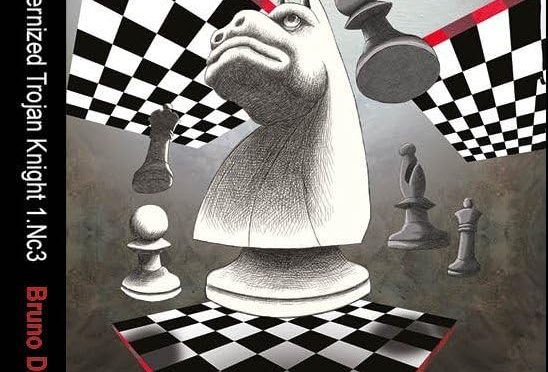From the Publisher, Thinkers Publishing:
The idea of the move 1. Nc3 is to confuse the second player, as White plays a supposedly unambitious move to mislead Black. This is why we found the name “Trojan Horse” very appropriate for the move 1. Nc3, just as the gift from Ulysses to the Trojans appeared to be a tricky and poisoned gift. The appropriate term for chess will, therefore, be the Trojan Knight to refer to the Trojan Horse.
1. Nc3 became popular among professional players, and many grandmasters have added it to their repertoire or played it occasionally in official games: Nakamura, Morozevich, Rapport, Bauer, Vallejo Pons… However, it is especially in rapid games that it has reached the world elite, and the very best players in the world have tried it: Carlsen, Mamedyarov, Andreikin and Firouzja for example. I truly hope that seeing the very best players in the world playing it will convince even the most sceptical critics.
About the Author:
The author Bruno Dieu is a FIDE Master and became French Correspondence Chess Champion in 2000. He has a rich experience in chess, having participated in various chess tournaments, both over the board and in correspondence. It’s fascinating that he has competed with notable experts and writers on the 1 Nc3, such as Dick Van Geet, Anker Aasum, and Harald Keilhack. The mention of a book being a token of his experience suggests that he has documented his insights and knowledge about this opening.

This absorbing and well-thought tome is a delight and covers a wealth of material after White’s opening salvo with 1.Nc3.
First encounters
As a junior, the reviewer knew this opening as the Dunst opening. I first met the Dunst on 18 January 1975 in a simul in London against the late and great Tony Miles, a year before he became the first UK-born, over-the-board chess GM. The game transposed into the Four Knights opening and I was inevitably steadily outplayed by Miles, who won a pawn with a neat back rank combination in a major piece middlegame. Unexpectedly, Miles faltered in a winning rook and pawn endgame at move 47, wasting a vital tempo, allowing an excited junior to escape with a draw. My next encounter with the Dunst was a few months later against another strong Birmingham player. This time, booked up, I played the so called refutation with 1…d5 reaching this position:

The inexperienced junior, as Black, came up with the positional howler 10…f5? but managed to draw again when my opponent blundered by opting to exchange into an optically good, but drawn king and pawn endgame. This line is covered in the book, 10…f6 is certainly a better move, although the author prefers 10.Nd2 for White.
A callow player as Black may regard the Trojan Knight as just another unusual opening move which aims to avoid main line theory. On the contrary, as the author points out, 1.Nc3 is a cunning move full of transpositional possibilities whereby the second player can end up in an unfamiliar opening.
I have faced the Trojan Knight on 15 occasions replying 1…e5 in my first game, 1…d5 in my second outing and 1…c5 in subsequent encounters.
The reviewer has opted for the Trojan Knight as White in a total of 15 games; the transposition statistics are of interest:
- Sicilian (4 games)
- French (2 games)
- Caro-Kann (1 game)
- Vienna (1 game)
- Czech Pirc (1 game)
- Irregular queen’s pawn (1 game)
- 1…b6 1 (game)
- Trojan Knight main line 1…d5 2.e4 d4 (1 game)
- Trojan Knight main line 1…e5 2.Nf3 Nc6 3.d4 (3 games)
This small sample shows the variety of branches available.
The book is logically divided into 6 parts:
PART I – 1…e5
PART II – 1…d5 2.e4 d4
PART III – 1…d5 2.e4 dxe4
PART IV – 1…d5 – Caro-Kann, French & Alekhine Style
PART V – 1…c5 – Sicilian Style
PART VI – Other First Moves
PART I – 1…e5
This is the natural response which was the move played by the reviewer on first meeting 1.Nc3.
After the following natural moves 1.Nc3 e5 2.Nf3 Nc6 3.d4 exd4 4.Nxd4 this position is reached:
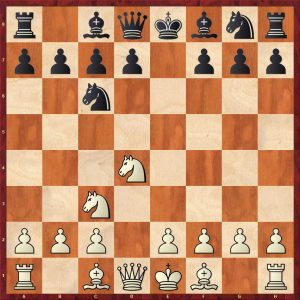
This position obviously has affinities with the Scotch Game and of course can transpose if both players acquiesce. Black can can get into difficulties very quickly here with a sloppy move. A few examples given are:
4…Qf6? (played in some lines of the Scotch) 5. Ndb5! winning as c7 collapses.
4… Qh4? 5.Ndb5! (winning)
4…g6? (looks natural to fianchetto, akin to Larsen’s fianchetto variation of the Philidor Defence) 5.Nd5! a6 (5…Bg7 6. Nb5 Be5 7.f4 wins) 6.Bg5! (6.Bf4 is also excellent) 6…f6 7.Bf4 d6 8.e4 Bg7 9.h4 with a clear advantage
4…d5?! (looks natural) 5.Bf4! a6 (5…Bb4 6.Nxc6 Bxc3+ 7.bxc3 bxc6 8.Qd4! with a big plus) 6. e4 with a definite edge
4…Bb4!? is interesting, White can gain an edge with the Scotch like move 5.Nxc6! bxc6 (5…dxc6 is obviously weaker) 6. Qd4! winning the bishop pair or forcing the horrid 6…Bf8?!
Black should interject the capture on c3 in the last line, after 4…Bb4!? 5.Nxc6 Bxc3+ 6. bxc3 bxc6 7.Qd4! Nf6 8.Bg5
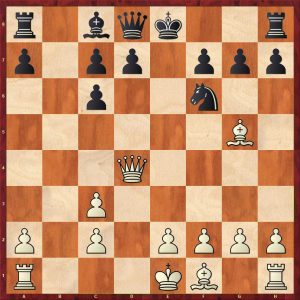
White has a small edge. A typical continuation could be 8…h6 9.Bxf6 Qxf6 10.Qxf6 gxf6 11. g3 Rb8 12.Bg2 Ke7 13.Kd2 Ba6
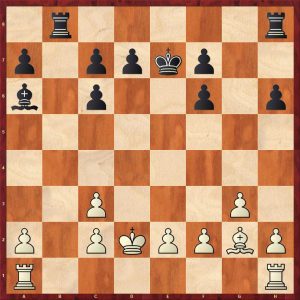
Now 14.Rhb1! with a slight edge to White in a complex endgame.
4…Bc5 is the best move along with 4…Nf6.
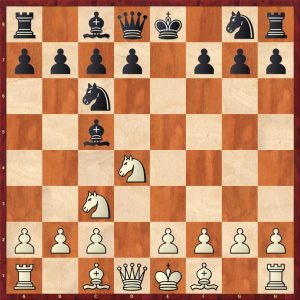
The author offers three decent alternatives for white:
- 5.Be3
- 5.Nxc6
- 5.Nf5
5.Nb3 Bb6 6.e4 transposes a Scotch Game main line.
After 5.Nf5 Qf6, the author offers two interesting alternatives 6.g4 and 6.e4. He claims that 6.g4 is very strong, but the author’s analysis has a significant hole. After 6.g4 Bb4 7.Bd2 Nge7 8.e4:

The author offers the anaemic 8…Nxf5 for Black, after 9.gxf5 Qh4 10.Qf3 Black is in real trouble. The reviewer smelt a rat here as Nxf5 looks too compliant: a quick check with Stockfish reveals 8…d5! equalising. This is a rare significant oversight by the author. Clearly the reviewer has not checked 450+ pages of dense variations but intuition has to be used to choose the positions to use the engine.
6.e4! is better as the author points out leading to Scotch positions where White has a space advantage and although the position is only fractionally better for White, it is easier to play for the first player.
4…Nf6 seems to be the most natural developing move. 5.Bg5! keeps the game in lesser known channels and is better than 5.e4.
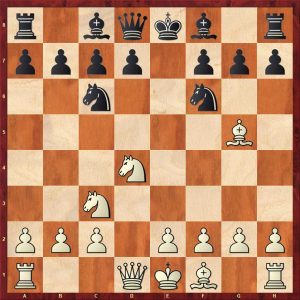
Black has to be careful here, not to slip into an inferior position.
The passive 5…Be7 allows 6.Nf5! and White has a definite advantage.
The natural 5…d5? allows 6.Bxf6! and White has a distinct edge.
The natural 5…Bc5! is ok setting up veiled threats against f2. 6.e3! Nxd4 (6…0-0 7.Nd5! and white is a little better) 7.exd4 Be7 Now 8.Qd2 is an improvement on the author’s 8.Qf3 leading to a small advantage to White.
The pin 5…Bb4 is certainly playable, 6.Nxc6 leads to a small White edge.
PART II – 1…d5 2.e4 d4
If there is a problem with 1.Nc3, it is definitely this variation which is critical as Black gains space and time. One of the crucial lines is 1.Nc3 d5 2.e4 d4 3. Nce2 (3.Nb1 Nf6!) 3…e5 4.Ng3 (4.f4 Nc6! 5.Nf3 Bg4!) Be6! 5.Nf3 (5.c3 Nc6!) 5…f6!
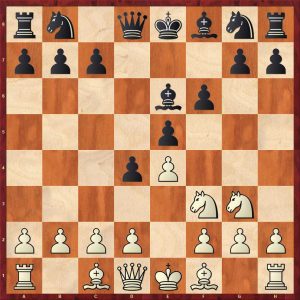
This line is the reason that the reviewer gave up on 1.Nc3.
White can try 6.Bb5+ c6 7.Be2!? (7.Ba4 Na6! 8.Bb3 Bxb3! 9.axb3 d3! 10.0-0 Nb4 11.cxd3 Nxb4 12.Ne1 Nh6 and Black has an edge.) 7…g6 (keeping the knight out of f5) 8.0-0 Qd7 9.b4!? Nh6 (9…Bxb4 10.c3! dxc3 11.d4 is better for White as Black’s development is lacking.) and Black is slightly better.
I hope that this short review gives the reader a glimpse into the complexities of this opening. My only small criticism of the book is that the author sometimes puts the best moves in an editorial side line but I realise this is to keep the featured game as the main line.
In summary, this is an excellent book.
FM Richard Webb, Basingstoke, Hampshire, 28th April 2024

Book Details :
- Hardcover : 475 pages
- Publisher:Thinkers Publishing; 1st edition (1 Mar. 2024)
- Language: English
- ISBN-10: 9464787546
- ISBN-13: 978-9464787542
- Product Dimensions: 16.61 x 3.4 x 23.6 cm
Official web site of Thinkers Publishing


